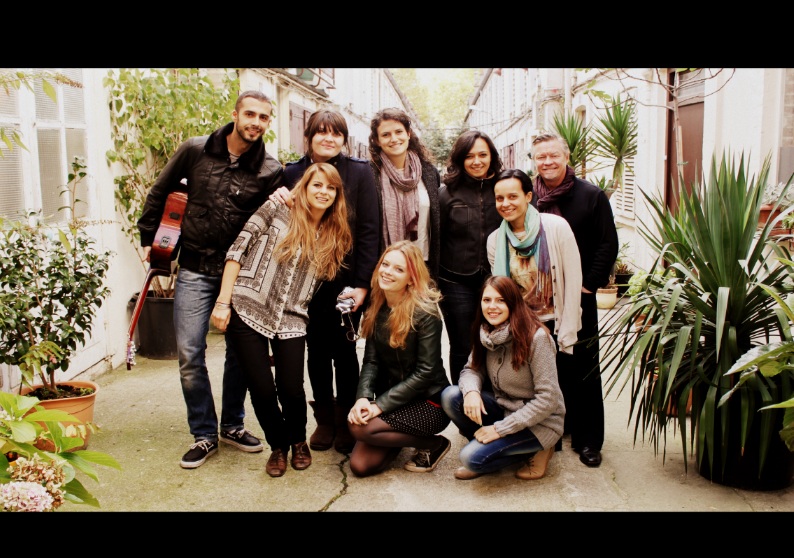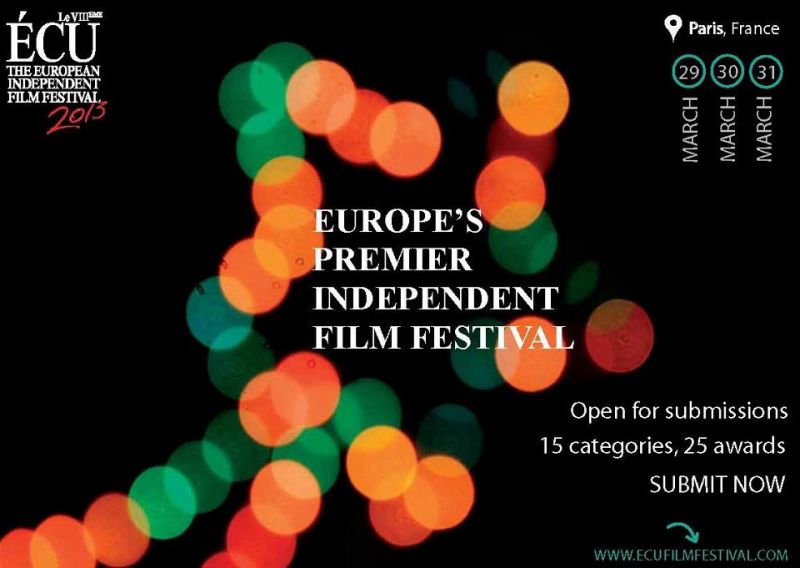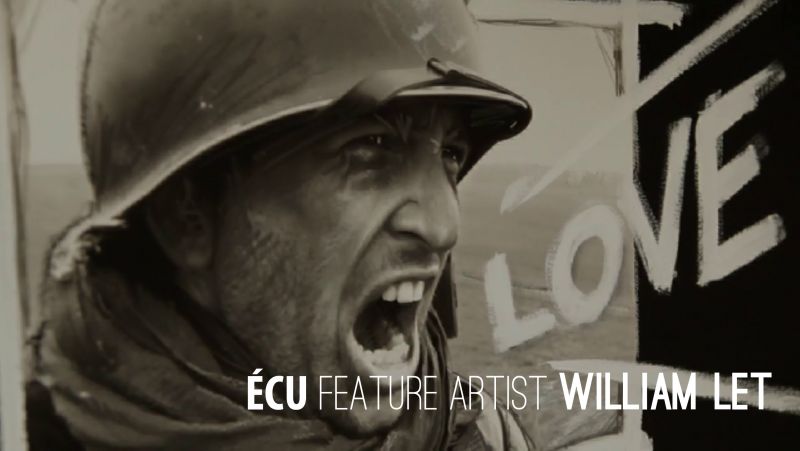photo © Roc Herms
by Marc Rickenbach
Argentinian artist Sebastián Litmanovich is the sort of guy that
can’t seem to stay still…creatively speaking. At any given time he is
involved in several projects, putting his many talents that span
different mediums to good use. While performing or releasing his
loveable Spanish-language indie pop, he goes by the name Cineplexx under
which he has released no less than three full length albums, countless
remix EPs and just as many singles. For his career as a graphic artist
he works under his Tea Time studio identity where he has designed album
covers for such artists as Federico Aubele and Natalia Clavier, and most
recently directed a video for French artist Cathy Claret.
In addition to all of this, Sebastián has just moved to London and
was running out the door to Glasgow to play a show when this interview
took place. Yet he still found the time and peace of mind to answer some
of our questions (for which we are infinitely grateful). In the
following interview, Sebastián shares some of his views on working in
various mediums, and especially about directing his own music videos on a
limited budget. Enjoy.
ÉCU: You’ve been making music for some time now, as well as
working as a graphic artist. How have these two mediums influenced each
other in your work?
SEBASTIÁN LITMANOVICH: Well basically I started both
activities professionally at the same time around 1996. I first thought
that music would be a more soulful activity, more emotional and
irrational, and that graphic design would be more intellectual. But
during this time both activities continued crossing paths and I also
started working in video, illustration, and on more art experiments. I
find that all are very similar in terms of the creative process and the
use of intuition. The main difference is that only Tea Time Studio
(mostly graphic design) is focused on my commercial projects, and
Cineplexx is just a constant development of my own music.
Since I am working in both areas I ended up doing integrated
projects. One of my latest is a good example. I asked Cathy Claret (the
great French Gypsy singer) to sing in one of my songs (for my upcoming
album), then she asked me to remix two of her songs, then I ended up
producing her new single and playing all the instruments and recording
all of it at my home studio in Barcelona (just before I moved to
London). Her label then asked me to make a video clip for her single so I
created a storyboard, then shot it and then edited at my studio. It
felt natural that I ended up doing the whole thing.
ÉCU: In terms of your videos, specifically “Mejor” and “Tiger
Trap”, which your own studio produced, were there any factors that
influenced you in creating these?
SL: Not really, and yes, all the things that I like influenced me to do it. My video influences can be seen in my youtube channel. The ideas are simple… I wanted both videos to be fun!
ÉCU: As you know, this interview is for the ECU European
Independent Film Festival, and is geared towards filmmakers of all
kinds. Could you give us a little insight as to what techniques you used
to create your videos? What sources you pulled from, where you found
them, as well as equipment and anything else special about the process?
SL: I just had to find a way to create both videos
with absolutely no budget and in a super short time, so I thought of
doing a cheap key color shoot of myself (for Mejor) and of Ana’s mouth
(for Tiger Trap) and edited them using some old footage to create the
60’s mood I wanted to reach, or the zoo and the singing animals. Also I
am not very techy and I don’t like things to be perfect, so you will see
in all my work that there is no hi resolution technology, or micro
edition, or animation with gravity effect, or whatever the newest
technology is. I am not saying that this is a bad thing, it’s just that I
don’t think this would fit with my way of doing things at the moment.
The main goal of my work (say music, visual, videos) is to learn and
have fun as much as is possible.
Mejor was edited in Final Cut and it was a real pain! Especially
because it was my first video edition. I had other previous video works,
like the mockumentary “The Synchronized Dance of the Magnetic Peanuts,”
but I was not in charge of the video edition. I worked on the script,
music and directing only. For Tiger Trap I jumped to After Effects and
it was great, easier for this kind of video with so many layers and
animations.
All the vintage footage is from the Prelinger Archives, all open source. It can be found here. The colourful backgrounds in Tiger Trap are artwork by Ana Montiel (my soul mate). Both clips were shot with a SLR photographic camera: Canon D50.
ÉCU: You’re from Argentina, lived in Barcelona for a while
and now you’re in London. How has living in these different countries
and cultures affected your art and your music? Do you get a sense that
there are any differences in terms of aesthetics and attitude toward
independent art, specifically film and music videos?
SL: Well I think Argentinean films and music videos have their own
sense of humour, style and taste for a particular kind of drama. This
can also be seen in Argentinean advertising work and music (ie: Tango
music, Argentinean folk music, etc). Spain was a good influence in terms
of their taste for bizarre, camp stuff and surreal humour. This can be
seen in their music too. They like and prefer to have fun instead of
drama (i.e: La Movida Madrileña, Almodobar, and so many!)
I can’t generalise about this really, because I had changed so much
myself all these years, and had such a different life in Buenos Aires,
and in Barcelona. My work is a reflection of the process of learning and
living. In Barcelona I had the opportunity to collaborate with many
artists and this was very exciting… only then I started writing scripts
and exploring my own humour without any fear of the ridiculous. Now I
reckon that this happened only as a result of my own evolution and my
close circle of people and influences, not only because of the city I
was living in.
Now here in London I can see there is a clear market and a whole
industry around independent art. In Buenos Aires there is no money to
develop experimental art projects so you learn how to do it without
anything. Barcelona was in the middle of this I think, not much money
but “yes we like an arty video for a shoe company”.
ÉCU: Through your own personal experience, what role do you
see music videos play? (ie. promotional, artistic, etc) And how
important are they?
SL: Both promotional and artistic. Videos really
help to make your music be heard everywhere. People in social networks
are posting videos all the time, and if they’d like to share a song with
a friend they go to Youtube, because they don’t need to be registered
or anything to just play it. Video work is something I am discovering
and exploring more and more, I love how organic and out of control this
kind of work can be. It is closer to recording music or doing a magic
trick!
ÉCU: Any favorite music videos you’d like to share with us? Or music video directors?
SL: Yes I have lots! Here I made a list of my favourites from my Youtube channel:
Bobby Conn- Never get Ahead.
This is one of my top videos, Bobby’s performance and the public and
everything. The idea of doing the video as public tv show is just
perfect.
Belle & Sebastian – Sing… Jonathan David. I love the video, the bad acting, and the song of course.
Still Corners – Wish. This is a great band I just discovered, and the video is so nice.
Yo La Tengo – Sugarcube. All time favourite, excellent video ad song.
Vainica doble – Caramelo de limón. A classic song of the amazing Spanish band Vainica Doble, I love the footage.
ÉCU: Do you have any words of advice for aspiring music video directors or musicians who are looking to make videos themselves?
SL: Well first of all, as you can see in my video
selection, it is not necessary to have a lot of money. Of course money
helps you to buy all your equipment or rent a car or a studio, but the
most important thing is to have a good idea. From there you will have to
solve what you need to create the video. Sometimes with a digital
camera, or an 8 mm, you can create fantastic footage.
ÉCU: Anything else you’d like to share with our readers?
SL: Yes, don’t be afraid to experiment, and have fun doing it!
Follow these links for more information on Cineplexx and Tea Time Studio, as well as Sebastián’s personal YouTube channel, where he has documented some of his favorite videos.
///
par Marc Rickenbach
L’artiste Argentin Sebastián Litmanovich ne tient pas en place …
créativement parlant. Il est toujours engagé dans plusieurs projets à la
fois, utilisant à bon escient ses nombreux talents dans divers
domaines. Celui qui se fait appeler Cineplexx chante de charmantes
chansons pop indie en espagnol sur scène ou sur CD. Il a à son actif pas
moins de 3 albums, d’innombrables maxis, et autant de singles. En tant
qu’artiste graphique, il est connu sous le nom de Tea Time, et a
notamment conçu des couvertures d’album pour Federico Aubele et Natalia
Clavier, et plus récemment, un clip pour l’artiste française Cathy
Claret.
En plus de tout cela, Sebastián vient d’emménager à Londres et
s’apprêtait à partir pour Glasgow pour y donner un spectacle juste après
cet entretien. Il a pourtant trouvé le temps et le calme nécessaires
pour répondre à nos questions, et nous lui en sommes très
reconnaissants. Dans le présent entretien, Sebastián nous explique
comment il travaille avec plusieurs supports, et comment il réalise des
clips avec un budget limité.
ÉCU : Vous travaillez dans la musique et dans le graphisme
depuis un moment. Comment est-ce que ces deux domaines se sont
influencés dans vos créations ?
SEBASTIÁN LITMANOVICH : J’ai commencé ces deux
activités à un niveau professionnel la même année, en 1996. Au début je
pensais que la musique serait une activité plus profonde, plus
émotionnelle et irrationnelle, et que le graphisme serait plus cérébral.
Mais pendant tout ce temps, les deux activités n’ont cessé de se
rejoindre, et j’ai aussi commencé à faire des petits films, des
illustrations et plus d’art expérimental. Je trouve que tout cela se
ressemble en termes de processus de création et d’usage de l’intuition.
La principale différence est que Tea Time Studio (surtout du graphisme)
s’occupe de projets commerciaux, et Cineplexx est un développement
permanent de ma propre musique.
Travailler dans ces deux domaines m’a naturellement amené à monter
des projets mixtes. Mon dernier projet en est un bon exemple : j’ai
demandé à Cathy Claret (la grande chanteuse manouche) de chanter dans
une de mes chansons (pour un prochain album), puis elle m’a demandé de
remixer deux de ses chansons, et j’ai fini par produire son nouveau
single, jouer toute la partie instrumentale et tout enregistrer dans mon
studio chez moi à Barcelone (juste avant d’emménager à Londres). Sa
maison de disque m’a ensuite demandé de faire un clip pour son single.
J’ai donc dessiné un storyboard avant de me lancer dans le tournage, et
j’ai effectué le montage dans mon studio. Ca s’est enchaîné tout
naturellement, et finalement c’est moi qui ai tout fait.
ÉCU : À propos de vos clips, plus particulièrement “Mejor” et
“Tiger Trap”, produits par votre propre studio, avez-vous été influencé
par des éléments précis ?
SL : Oui et non, tout ce que j’aime m’influence. Vous pouvez voir mes influences en matière de clips sur ma chaîne youtube. L’idée est simple, je voulais que ces deux clips soient amusants !
ÉCU : Comme vous le savez, cet entretien est destiné à ÉCU,
le Festival Européen du Film Indépendant, qui s’adresse aux cinéastes en
tous genres. Pourriez-vous nous donner un petit aperçu des techniques
que vous utilisez pour réaliser vos clips ? Quelles sont vos sources, où
les avez-vous trouvées, comment vous êtes-vous procuré votre équipement
? Souhaitez-vous ajouter autre chose sur le processus?
SL : Il fallait juste que je trouve un moyen de
réaliser des clips sans le moindre budget et en très peu de temps. Alors
pour ‘Mejor’, j’ai pensé me filmer devant un fond vert bricolé
(incrustation en chrominance), et pour ‘Tiger Trap’, j’ai fait la même
chose en filmant la bouche d’Ana. Pour le montage, j’ai utilisé des
vieilles séquences pour recréer l’esprit des années 60 ou des prises de
vues du zoo ou d’animaux qui chantaient. Je ne suis pas vraiment accro à
la technologie, et je n’aime pas ce qui est trop bien léché, donc dans
tout ce que j’ai fait vous ne trouverez pas de high-tech, pas de
micro-édition, pas d’effets spéciaux dans les films d’animation, ou
autre dernier gadget. Je ne dis pas que c’est mauvais en soi, c’est
simplement que ça ne correspond pas à ma méthode actuelle. Le but
principal de mes créations (musique, visuel, film), c’est d’apprendre et
de m’amuser autant que possible.
J’ai utilisé Final Cut pour le montage de ‘Mejor’, et ça n’a pas été
une partie de plaisir ! D’autant plus que c’était la première fois que
je faisais le montage d’un clip. J’avais fait d’autres films, comme le
documenteur : “The Synchronized Dance of the Magnetic Peanuts”,
mais quelqu’un d’autre s’est chargé du montage. Je n’ai travaillé que
sur le scénario, la musique et la mise en scène. Pour ‘Tiger Trap’, je
suis passé au logiciel After Effects, et c’était génial. C’était bien
plus facile pour ce genre de clips, qui ont beaucoup de couches et
d’animations.
Toutes les séquences anciennes proviennent des archives Prelinger, complètement libres de droit. Les arrière-plans colorés dans ‘Tiger Trap’ ont été fabriqués par Ana Montiel (mon âme-soeur). Les deux clips ont été tournés avec un reflex mono-numérique Canon D50.
ÉCU : Vous venez d’Argentine, avez vécu à Barcelone pendant
un moment, et maintenant, vous êtes basé à Londres. Comment le fait
d’avoir vécu dans différents pays et différentes cultures vous a
affectés vous et votre musique ? Avez-vous remarqué des différences
entre les esthétiques et les attitudes par rapport à l’art indépendant,
surtout dans le domaine du cinéma et des clips ?
SL : à mes yeux, les films et les clips argentins
ont un sens de l’humour, un style bien particulier et un goût pour le
drame. On peut aussi le voir dans les oeuvres musicales argentines
(tango, musique traditionnelle argentine). L’Espagne a joué un rôle dans
leur préférence pour le bizarre, le théâtral et l’humour surréaliste.
C’est aussi visible dans leur musique. Ils préfèrent le comique au
tragique (la Movida, Almodovar et tant d’autres).
Mais je ne veux pas faire de généralisation là-dessus, parce que j’ai
moi-même beaucoup changé ces dernières années, et ma vie à Buenos Aires
a été complètement différente de celle que j’ai vécue à Barcelone. Mon
travail est une réflexion sur l’apprentissage et la vie. À Barcelone,
j’ai eu l’occasion de collaborer avec de nombreux artistes, et c’était
génial ! C’est seulement à ce moment-là que j’ai commencé à écrire des
scénarios et à explorer mon propre humour sans avoir peur du ridicule.
Je pense que c’était moins lié à la ville où je vivais qu’à ma propre
évolution, mon cercle d’amis et mes influences.
Ici à Londres, je vois bien qu’il y a tout un marché et une industrie
autour de l’art indépendant. Tandis qu’à Buenos Aires, on manque
d’argent pour développer les projets d’art expérimental, ce qui nous
oblige à apprendre à faire avec les moyens du bord. Barcelone était
entre les deux : pas trop d’argent, mais « oui, on voudrait une pub un
peu artiste pour une marque de chaussure. »
ÉCU : D’après votre propre expérience personnelle, quel rôle
les clips peuvent-ils jouer ? (promotionnel, artistique, etc). Et quelle
est leur importance ?
SL : Ils jouent un rôle à la fois promotionnel et
artistique. Les clips permettent vraiment de diffuser une musique
partout. Les gens en postent tout le temps dans les réseaux sociaux.
S’ils ont envie de partager une chanson avec un ami, ils vont sur
Youtube, parce qu’ils n’ont pas besoin d’être inscrit ni de payer pour
la voir. Je découvre et j’explore les clips de plus en plus, j’aime le
fait qu’ils puissent être naturels et un peu fous. C’est un peu comme
d’enregistrer de la musique ou de faire des tours de magie.
ÉCU : Y a-t-il des clips que vous aimeriez nous faire partager ? Ou des réalisateurs de clip ?
SL : Oui, il y en a plein ! J’ai fait une liste de ceux que je préfère sur ma chaîne Youtube :
Bobby Conn- Never get Ahead
C’est l’un de mes clips favoris, pour la performance de Bobby, le
public, et tout le reste. L’idée de tourner le clip comme une émission
tv est parfaite.
Belle & Sebastian – Sing… Jonathan David
J’adore ce clip, le mauvais jeu des acteurs, et la chanson bien sûr.
Still Corners – Wish
Voilà un groupe génial que je viens de découvrir, et le clip est vraiment beau.
Yo La Tengo – Sugarcube
Mon préféré, le clip et la musique sont excellents.
Vainica doble – Caramelo de limón.
Un classique du groupe espagnol Vainica Doble, j’adore le montage.
ÉCU : Avez-vous des conseils pour les réalisateurs de clip et musiciens amateurs qui veulent faire leur propre clip ?
SL : Avant tout, comme vous pouvez le voir dans ma
sélection, il n’est pas nécessaire d’avoir beaucoup d’argent. L’argent
peut vous aider à acheter tout votre équipement ou louer une voiture et
un studio, mais l’essentiel c’est d’avoir une bonne idée. Si vous avez
ça, vous pourrez vous débrouiller pour réaliser votre clip. Parfois,
avec une caméra numérique ou une caméra 8 mm, vous pouvez faire de
supers prises.
ÉCU : Y a-t-il autre chose que vous souhaitez partager avec nos lecteurs ?
SL : Oui, n’ayez pas peur d’expérimenter, et amusez-vous !
Cliquez sur les liens suivants pour obtenir plus d’informations sur Cineplexx et Tea Time Studio, et pour accéder à sa chaîne personnelle Youtube , où il a rassemblé quelques-uns de ses clips préférés.
 Hillier Scott
Hillier Scott 



























